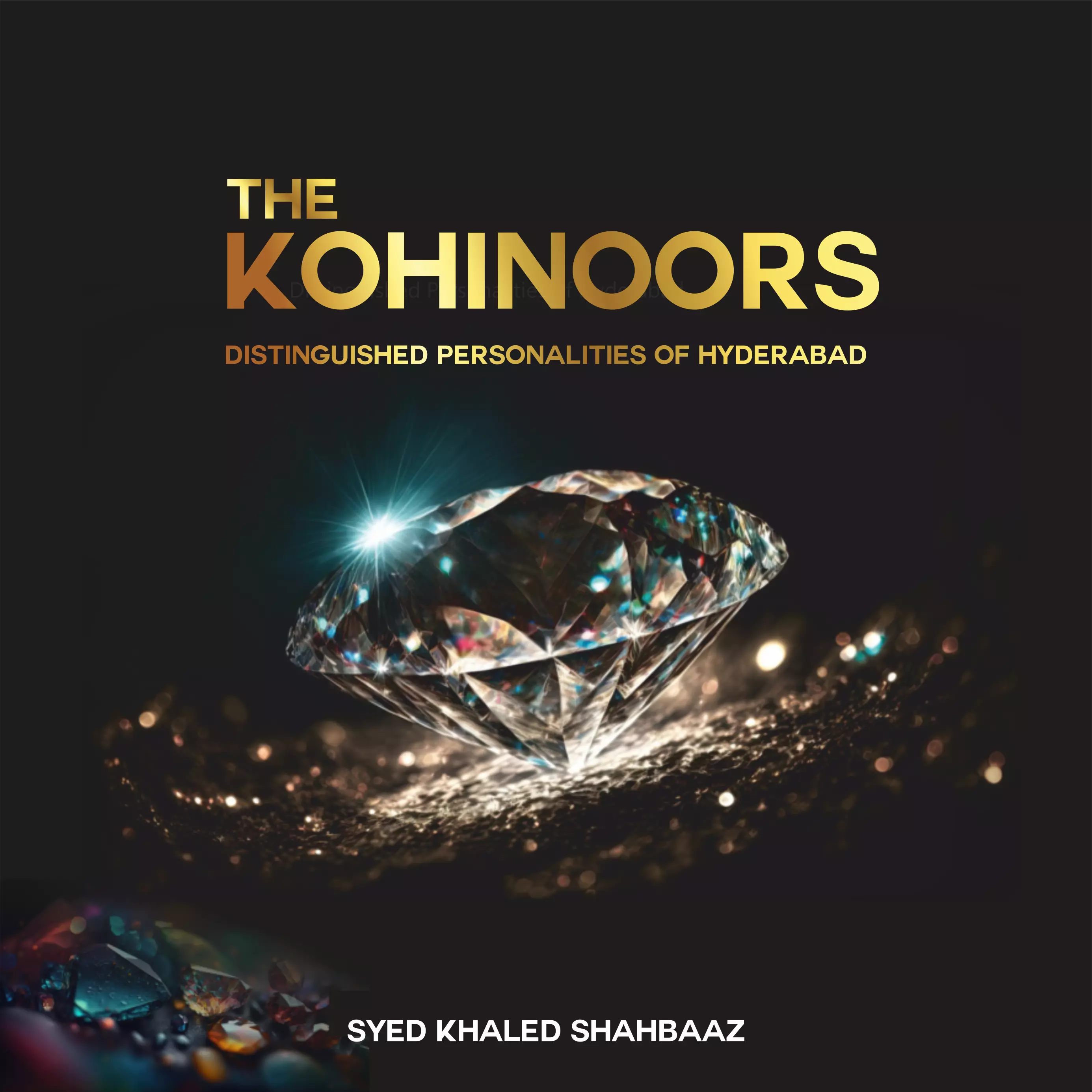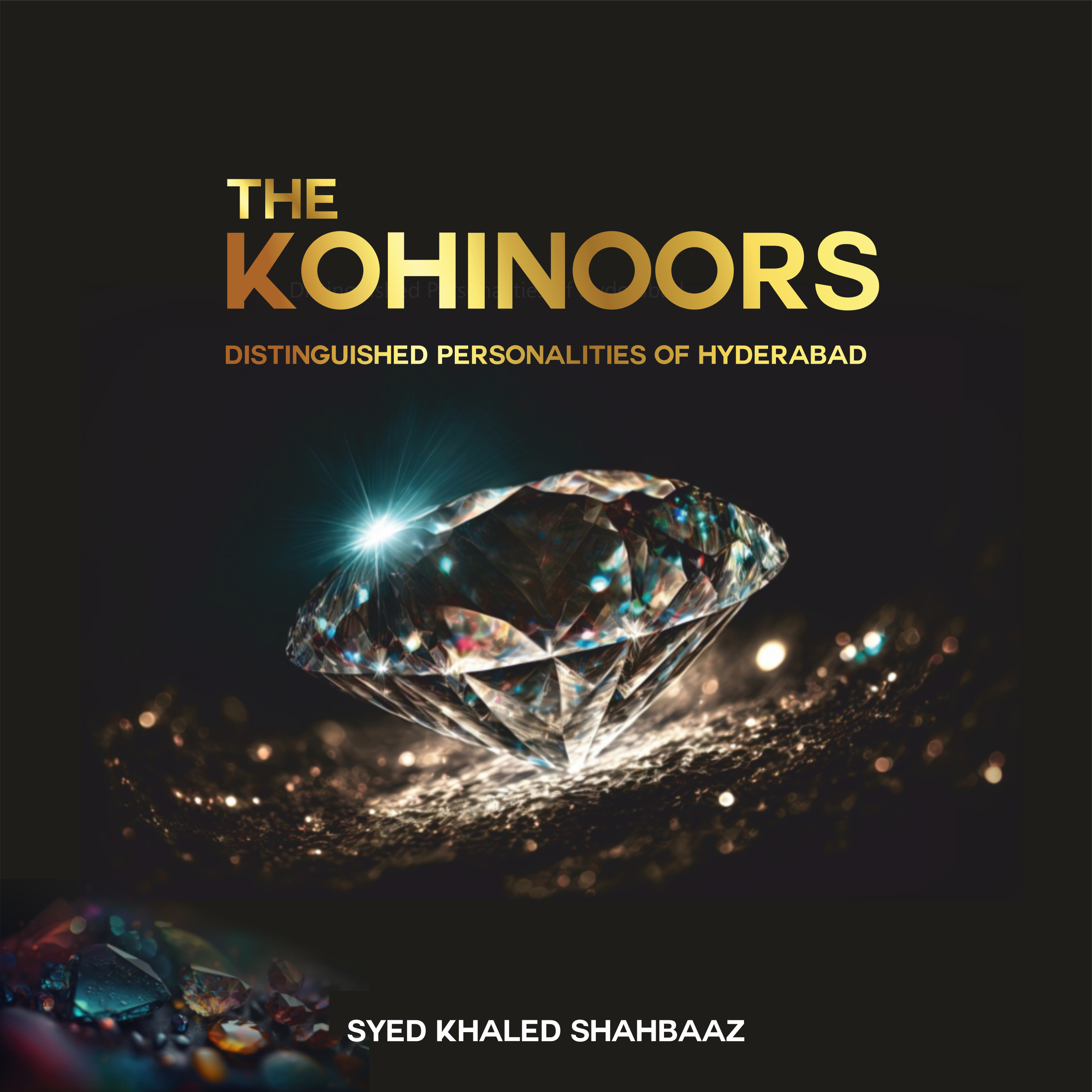
Published by Media Plus Foundation
Author: Syed Khaled Shahbaaz
Pages: 236
Price: Rs 2,000
It is very rare for a youngster, who is enjoying the best possible career in the United States after an equally lucrative stint in the Middle East, to leave them all and head home lock, stock and barrel to pursue a dream that had nothing to do with his engineering background and IT expertise.
Call it responding to an inner calling or taking forward the legacy inherited from his eminent father, Syed Khaled Shahbaaz has done precisely that. He has not only joined Mediaplus, a leading PR and advertising agency that is run by his father Syed Fazil Hussain Parvez in Hyderabad, but also fine-tuned the writer in him inspired by his illustrious father’s profound career in Urdu journalism.
Of course, as a teenager he did give glimpses of the penmanship in him by way of innumerable published articles and English poetry.
After achieving a Masters in Communication and Journalism at Osmania University with a gold medal, he dived deep into writing.
Khaled Shahbaaz has just released his maiden work, the 236-page ‘The Kohinoors — Distinguished personalities of Hyderabad.’
This is not just another book that traces the evolution of the historic city but a well-researched documentation of Hyderabad’s growth to its present day global city status. In a way, it is a salute to the city’s rich legacy and heritage, aspects that he has researched with aplomb and put them in the book with equal finesse.
Much like historians, Khaled Shahbaaz has taken upon himself the responsibility to document and preserve the city’s cultural and historical heritage for posterity. And he has done a thorough job of it.
On reading it, one gets to understand, and appreciate, the amount of labour he has put in to gather material about the men of eminence from a distant past, while making it relevant to contemporary times.
The book, which has been written in a lucid manner all through, brings alive the magnificence of the bygone era’s talents that have stood the test of time, and gives a peep into the lifestyle of the rulers, whose grandeur tastes are reflected in the architectural marvels built at a time when almost all construction works were done manually. The structures have survived the vagaries of nature and remain awe-inspiring iconic landmarks, a distinct feature that is brought out adeptly in this book.
“This book documents personalities who have transcended their individual spheres of influence, impacting not only people they have served but also the wider world. They are shining examples of what we can achieve when we strive to deliver our very best. It is also my way of paying a befitting tribute to their immense contributions and a salute to their dynamism that has added brilliant chapters to the Hyderabad narrative. It is my personal opinion that these Kohinoors deserve more recognition and accolades than what I can achieve through this book,” points out Khaled Shahbaaz on what drove him to come up with this book.
A look at some of the illustrious names reflects the painstaking effort he has put in to present Hyderabad in a capsule form.
Take a look: Sultan Mohammed Quli Qutb Shah, the sultan who founded Hyderabad, along the banks of River Musi in 1591. Incidentally, it was originally named as ‘Shahr-e-Haidar’ and ‘Haidar Nagar’. The name was derived reverentially by ‘Haidar-e-Karrar of Hazrat Ali’, the last Caliph of Islam and brother-in-law of Prophet Mohammed;
Nawab Mir Osman Ali Khan, the visionary ruler who transformed Hyderabad. Nizam VII, the last Nizam of Hyderabad state, was also the first Raj Pramukh of Hyderabad; Maharaja Sir Kishen Pershad Bahadur, a staunch Nizam loyalist, whose administrative skills helped him rise to the exalted position of Prime Minister of Hyderabad on two separate occasions; Nawab Mukarram Jah Bahadur, Prince Muffakham Jah Bahadur, Rajkumari Indira Devi Dhanrajgir, Nawab Mohammed Abul Faiz Khan (scion of the Paigah family), Hakeem Moizuddin Farooqui, Prof. Amir Ullah Khan, Justice Sardar Ali Khan, ‘Nightingale of India’ Sarojini Naidu and Sir Ronald Ross.
Kohinoors of spirituality like Maulana Anwarullah Farooqui, Dr Muhammed Hameedullah, Syed Khalilullah Hussaini, Nawab Bahadur Yar Jung, and Maulana Aquil Husami, among other equally notable names.
Names from the world of art, literature and patriotism include Amjad Hyderabadi, Maqdoom Mohiddin, Salahuddin Nayyar, Dr Syed Taqi Hasan Abedi, and Rasheed Pundit and others.
Many other prominent names, including contemporary figures, like K. Chandrashekar Rao, Sultan Salahuddin Owaisi, Air Chief Marshal Idris Hasan Latif, Wing Commander (Retd.) Rakesh Sharma and Mohammed Azharuddin.
The high-quality art paper on which the book has been published stands out for the magnificent collection of rare and historic photos dating back to the former rulers. It demonstrates perseverance and shows the amount of labour the author has put in to bring about an element of originality that matches the content that has been pieced in together to come up with a wonderful product.
Meanwhile, given that Khaled Shahbaaz, whose writing skills are praiseworthy, is planning a sequel to this book, he should have earmarked some of the contemporary names for the second one rather than featuring them in the first book.
